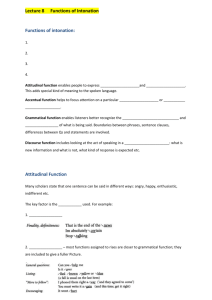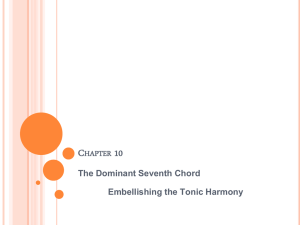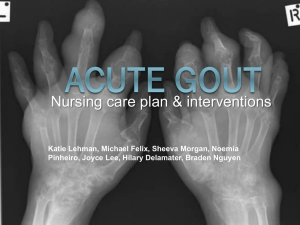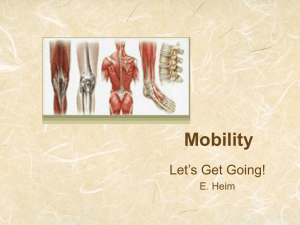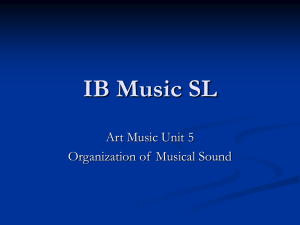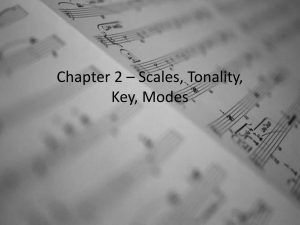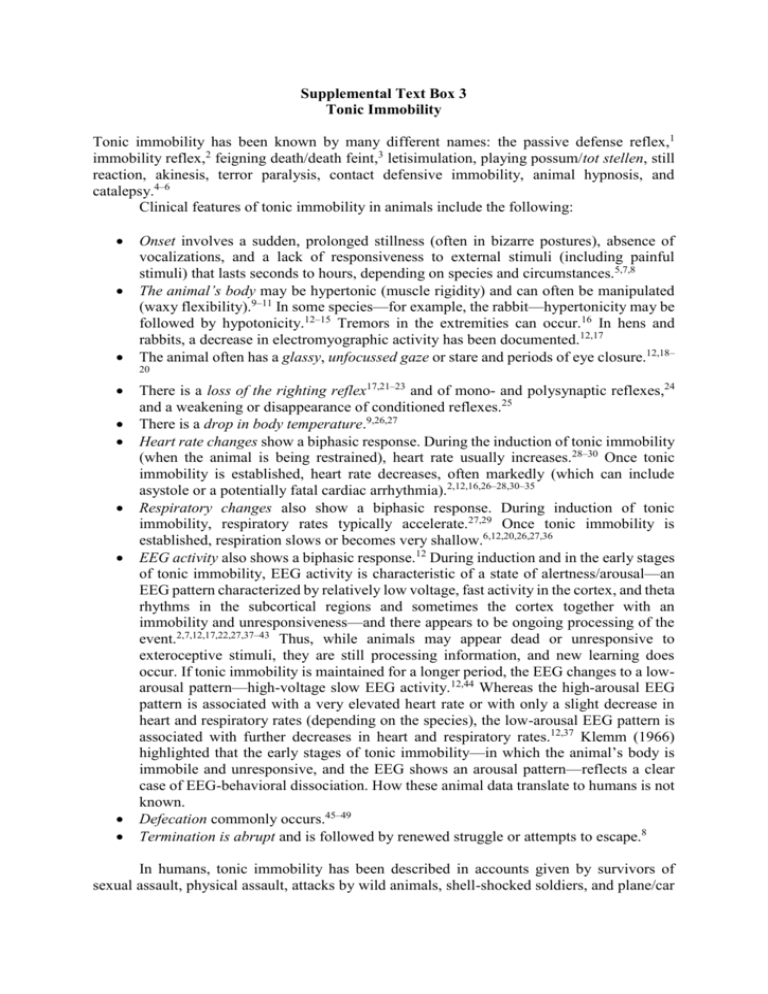
Supplemental Text Box 3
Tonic Immobility
Tonic immobility has been known by many different names: the passive defense reflex,1
immobility reflex,2 feigning death/death feint,3 letisimulation, playing possum/tot stellen, still
reaction, akinesis, terror paralysis, contact defensive immobility, animal hypnosis, and
catalepsy.4–6
Clinical features of tonic immobility in animals include the following:
Onset involves a sudden, prolonged stillness (often in bizarre postures), absence of
vocalizations, and a lack of responsiveness to external stimuli (including painful
stimuli) that lasts seconds to hours, depending on species and circumstances.5,7,8
The animal’s body may be hypertonic (muscle rigidity) and can often be manipulated
(waxy flexibility).9–11 In some species—for example, the rabbit—hypertonicity may be
followed by hypotonicity.12–15 Tremors in the extremities can occur.16 In hens and
rabbits, a decrease in electromyographic activity has been documented.12,17
The animal often has a glassy, unfocussed gaze or stare and periods of eye closure.12,18–
20
There is a loss of the righting reflex17,21–23 and of mono- and polysynaptic reflexes,24
and a weakening or disappearance of conditioned reflexes.25
There is a drop in body temperature.9,26,27
Heart rate changes show a biphasic response. During the induction of tonic immobility
(when the animal is being restrained), heart rate usually increases.28–30 Once tonic
immobility is established, heart rate decreases, often markedly (which can include
asystole or a potentially fatal cardiac arrhythmia).2,12,16,26–28,30–35
Respiratory changes also show a biphasic response. During induction of tonic
immobility, respiratory rates typically accelerate.27,29 Once tonic immobility is
established, respiration slows or becomes very shallow.6,12,20,26,27,36
EEG activity also shows a biphasic response.12 During induction and in the early stages
of tonic immobility, EEG activity is characteristic of a state of alertness/arousal—an
EEG pattern characterized by relatively low voltage, fast activity in the cortex, and theta
rhythms in the subcortical regions and sometimes the cortex together with an
immobility and unresponsiveness—and there appears to be ongoing processing of the
event.2,7,12,17,22,27,37–43 Thus, while animals may appear dead or unresponsive to
exteroceptive stimuli, they are still processing information, and new learning does
occur. If tonic immobility is maintained for a longer period, the EEG changes to a lowarousal pattern—high-voltage slow EEG activity.12,44 Whereas the high-arousal EEG
pattern is associated with a very elevated heart rate or with only a slight decrease in
heart and respiratory rates (depending on the species), the low-arousal EEG pattern is
associated with further decreases in heart and respiratory rates.12,37 Klemm (1966)
highlighted that the early stages of tonic immobility—in which the animal’s body is
immobile and unresponsive, and the EEG shows an arousal pattern—reflects a clear
case of EEG-behavioral dissociation. How these animal data translate to humans is not
known.
Defecation commonly occurs.45–49
Termination is abrupt and is followed by renewed struggle or attempts to escape.8
In humans, tonic immobility has been described in accounts given by survivors of
sexual assault, physical assault, attacks by wild animals, shell-shocked soldiers, and plane/car
crash victims.*,9,47,51–55 54,56 57 50,56,58–63 Victims report a subjective experience of immobility,
subjective feelings of coldness, numbness, and analgesia, uncontrollable shaking, eye closures,
and vivid recall of details.5,9,47,51,52,64,65 They also report fear in combination with dissociative
experiences (derealization and depersonalization) and a sense of entrapment/inescapability,
futility, or hopelessness.9,47,51,60
Although the animal literature strongly suggests that tonic immobility occurs in a
biphasic manner and that dissociations between different markers of arousal may occur—for
example, an EEG indicative of alertness/arousal combined with behavioral unresponsiveness
and immobility—the lack of studies of tonic immobility in humans and the lack of translational
studies between animals and both human and nonhuman primates make it difficult to know
whether tonic immobility in humans may similarly follow a biphasic pattern. Theoretically, it
is possible that, as a function of individual variations in neurophysiological reactivity, humans
may show a number of different phases or patterns of arousal within the tonic immobility
response. For example, in the initial stages of tonic immobility, when the individual shifts to
tonic immobility from a state of extreme sympathetic arousal, behavioral immobility may be
coupled with a high-arousal EEG pattern and an elevated heart rate. Once the parasympathetic
component of the tonic immobility response is activated, however, a drop in heart rate will
ensue. If the drop in heart rate is not extreme, the high arousal EEG pattern could be maintained.
If the heart rate drop is extreme, however, and results in significant bradycardia, the EEG
pattern is likely to shift to a low-arousal pattern—high-voltage, slow-wave pattern—
characteristic of cerebral ischemia.
REFERENCES
1.
2.
3.
4.
5.
6.
7.
8.
9.
*
Pavlov IP. Conditioned reflexes: an investigation of the physiological activity of the
cerebral cortex. Anrep GV, ed. & trans. London: Oxford University Press, 1927.
Klemm WR. Neurophysiologic studies of the immobility reflex (“animal hypnosis”).
Neurosci Res (NY) 1971;4:165–212.
Darwin C. Journal of researches into the geology and natural history of the various
countries visited by H.M.S. Beagle [The voyage of the Beagle]. London: Henry
Colburn, 1839.
Popova NK, Barykina NN, Plyusnina TA, Alekhina TA, Kolpakov VG. Expression of
the startle reaction in rats genetically predisposed towards different types of defensive
behavior. Neurosci Behav Physiol 2000;30:321–5.
Marks IM. Fears, phobias, and rituals: panic, anxiety, and their disorders. New York:
Oxford University Press, 1987.
Ratner SC. Comparative aspects of hypnosis. In: Gordon JE, ed. Handbook of clinical
experimental hypnosis. New York: Macmillan, 1967.
Gallup GG. Tonic immobility: the role of fear and predation. Psychol Rec 1977;27:41–
61.
Ratner SC, Thompson RW. Immobility reactions (fear) of domestic fowl as a function
of age and prior experience. Anim Behav 1960;8:186–91.
Marx BP, Forsyth JP, Gallup GG, Fusé T, Lexington JM. Tonic immobility as an
evolved predator defense: implications for sexual assault survivors. Clin Psychol Sci
Pract 2008;15:74–90.
Some of these accounts use the term freezing to describe the immobility attributed to the affected individuals.50
The descriptions of the immobility, however, suggest a state of tonic immobility, in which the individuals cannot
be roused into any action, rather than the attentive immobility of the freeze response, in which individuals are
primed to respond and would, in theory, burst into action when the opportunity arises or when prompted to so.
10.
11.
12.
13.
14.
15.
16.
17.
18.
19.
20.
21.
22.
23.
24.
25.
26.
27.
28.
29.
30.
31.
32.
Farabollini F, Lupo di Prisco C, Carli G. Changes in plasma testosterone and in its
hypothalamic metabolism following immobility responses in rabbits. Physiol Behav
1978;20:613–8.
Maser JD, Gallup GG Jr. Tonic immobility in the chicken: catalepsy potentiation by
uncontrollable shock and alleviation by imipramine. Psychosom Med 1974;36:199–
205.
Klemm WR. Electroencephalographic-behavioral dissociations during animal
hypnosis. Electroen Clin Neuro 1966;21:365–72.
Gallup GG, Maser J. Tonic immobility: evolutionary underpinnings of human catalepsy
and catatonia. In: Maser JD, Seligman MEP, eds. Psychopathology: experimental
models. San Francisco: W.H. Freeman, 1977.
Farabollini F, Lupo di Prisco C, Carli G. Changes in testosterone and inits hypothalamic
metabolism following immobility responses in rabbits. Physiol Behav 1978;20:613–8.
Carli G. Dissociation of electrocortical activity and somatic reflexes during rabbit
hypnosis. Arch Ital Biol 1969;107:219–34.
Reese WG, Newton JE, Angel C. Induced immobility in nervous and normal pointer
dogs. J Nerv Ment Dis 1982;170:605–13.
Gentle MJ, Jones RB, Woolley SC. Physiological changes during tonic immobility in
Gallus gallus var domesticus. Physiol Behav 1989;46:843–7.
Klemm WR. Identity of sensory and motor systems that are critical to the innobility
reflex (animal hypnosis). Psychol Rec 1977;27:145–9.
Gallup GG, Jr., Rosen TS, Brown CW. Effect of conditioned fear on tonic immobility
in domestic chickens. J Comp Physiol Psych 1972;78:22–5.
Hennig LM. Tonic immobility in the squirrel monkey (Saimiri sciurius). Primates
1978;19:333–42.
Monassi CR, Leite-Panissi CR, Menescal-de-Oliveira L. Ventrolateral periaqueductal
gray matter and the control of tonic immobility. Brain Res Bull 1999;50:201–8.
Gallup GG, Jr., Boren JL, Suarez SD, Wallnau LB, Gagliardi GJ. Evidence for the
integrity of central processing during tonic immobility. Physiol Behav 1980;25:189–
94.
Jones RB. The tonic immobility reaction of the domestic fowl: a review. World Poultry
Sci J 1989;42:82–96.
Carli G. Animal hypnosis in the rabbit. Psychol Rec 1977;1:123–43.
Pavlov IP. The experimental results obtained with animals in their application to man.
In: Anrep TaEbGV, ed. Conditioned reflexes: an investigation of the physiological
activity of the cerebral cortex. London: Oxford University Press, 1927:395–411.
Richter CP. On the phenomenon of sudden death in animals and man. Psychosom Med
1957;19:191–8.
Nash RF, Gallup GG, Jr., Czech DA. Psychological correlates of tonic immobility in
the dosmestic chicken (Gallus, gallus). Psychol Behav 1976;17:413–8.
Valance D, Despres G, Richard S, et al. Changes in heart rate variability during a tonic
immobility test in quail. Psychol Behav 2008;93:512–20.
Draper DC, Klemm WR. Behavioral responses associated with animal hypnosis.
Psychol Rec 1967;17:13–21.
Carli G. Blood pressure and heart rate in the rabbit during animal hypnosis. Electroen
Clin Neuro 1974;37:231–7.
Newton JEO, Lucas LA. Differential heart-rate responses to person in nervous and
normal pointer dogs. Behav Genet 1982;12:379–93.
Hofer MA. Cardiac and respiratory function during sudden prolonged immobility in
wild rodents. Psychosom Med 1970;32:633–47.
33.
34.
35.
36.
37.
38.
39.
40.
41.
42.
43.
44.
45.
46.
47.
48.
49.
50.
51.
52.
53.
Gallup GG, Jr., Nash RF, Potter RJ, Donegan NH. Effect of varying conditions of fear
on immobility reactions in domestic chickens (Gallus gallus). J Comp Physiol Psychol
1970;73:442–5.
Hatton DC, Lanthorn T, Webster D, Meyer ME. Baroreceptor involvement in the
immobility reflex. Behav Biol 1978;22:122–7.
Hatton DC, Webster D, Lanthorn T, Meyer ME. Evidence for baroreceptor involvement
in the immobility reflex in the rabbit: blood pressure changes during induction and
termination. Behav Neural Biol 1979;26:89–96.
Prestrude AM. Phylogenic comparisons of tonic immobility with special reference to
habituation and fear. Psychol Rec 1977;1:21–39.
Barratt ES. EEG correlates of tonic immobility in the opossum (Didelphis virginiana).
Electroen Clin Neuro 1965;18:709–11.
Klemm WR. EEG and multiple-unit activity in limbic and motor systems during
movement and immobility. Physiol Behav 1971;7:337–43.
Klemm WR. Evoked responses in brain motor areas during the immobility reflex
(“animal hypnosis”). Physiol Behav 1971;6:137–44.
Gallup GGJ, Rager DR. Tonic immobility as a model of extreme states of behavioural
inhibition: issues of methodology and measurement. In: Sanberg PR, Ossenkopp K-P,
Kavaliers M, eds. Motor activity and movement disorders: research issues and
applications. Totowa, NJ: Humana, 1996:57–80.
Depaulis A, Keay KA, Bandler R. Quiescence and hyporeactivity evoked by activation
of cell bodies in the ventrolateral midbrain periaqueductal gray of the rat. Exp Brain
Res 1994;99:75–83.
Fontani G, Grazzi F, Lombardi G, Carli G. Hippocampal rhythmic slow activity (RSA)
during animal hypnosis in the rabbit. Behav Brain Res 1982;6:15–24.
Harper RM. Frequency changes in hippocampal electrical activity during movement
and tonic immobility. Physiol Behav 1971;7:55–8.
Schwarz BE, Bickford RG. Electroencephalographic changes in animals under the
influence of hypnosis. J Nerv Ment Dis 1956;124:433–40.
Cantor C. Evolution and posttraumatic stress: disorders of vigilance and defence.
London; New York: Routledge, 2005.
Dixon AK. Ethological strategies for defence in animals and humans: their role in some
psychiatric disorders. Br J Med Psychol 1998;71(pt 4):417–45.
Humphreys KL, Sauder CL, Martin EK, Marx BP. Tonic immobility in childhood
sexual abuse survivors and its relationship to posttraumatic stress symptomatology. J
Interpers Violence 2009.
Gallup GG, Jr., Nash RF, Wagner AM. The tonic immobility reaction in chickens:
response characteristics and methodology. Behavi Res Methods 1971;3:237–9.
Bayard J. The duration of tonic immobility in guinea pigs. J Comp Physiol Psychol
1957;50:130–4.
Leach J. Why people ‘freeze’ in an emergency: temporal and cognitive constraints on
survival responses. Aviat Space Environ Med 2004;75:539–42.
Suarez SD, Gallup GG. Tonic immobility as a response to rape in humans: a theoretical
note. Psychol Rec 1979;29:315–20.
Heidt JM, Marx BP, Forsyth JP. Tonic immobility and childhood sexual abuse: a
preliminary report evaluating the sequela of rape-induced paralysis. Behav Res Ther
2005;43:1157–71.
Bovin MJ, Jager-Hyman S, Gold SD, Marx BP, Sloan DM. Tonic immobility mediates
the influence of peritraumatic fear and perceived inescapability on posttraumatic stress
symptom severity among sexual assault survivors. J Trauma Stress 2008;21:402–9.
54.
55.
56.
57.
58.
59.
60.
61.
62.
63.
64.
65.
Foa EB, Rothbaum BO. Treating the trauma of rape. New York: Guilford, 1998.
Fusé T, Forsyth JP, Marx B, Gallup GG, Weaver S. Factor structure of the Tonic
Immobility Scale in female sexual assault survivors: an exploratory and confirmatory
factor analysis. J Anxiety Disord 2007;21:265–83.
Johnson D. Just in case: a passenger’s guide to safety and survival. New York: Plenum,
1984.
Fiszman A, Mendlowicz MV, Marques-Portella C, et al. Peritraumatic tonic immobility
predicts a poor response to pharmacological treatment in victims of urban violence with
PTSD. J Affect Disord 2008;107:193–7.
Burgess AW, Holmstrom LL. Coping behavior of the rape victim. Am J Psychiatry
1976;133:413–8.
Gallup GG, Jr., Rager DR. Tonic immobility as a model of extreme states of behavioral
inhibition: Issues of methodology and measurement. In: Sanberg PR, Ossenkopp K-P,
Kavaliers M, eds. Motor activity and movement disorders: research issues and
applications. Totowa, NJ: Humana, 1996:57–80.
Galliano G, Noble LM, Travis LA, Puechl C. Victim reactions during rape sexual
assault: a preliminary study of the immobility response and its correlates. J Interpers
Violence 1993;8:109–14.
Lanius RA, Hopper JW, Menon RS. Individual differences in a husband and wife who
developed PTSD after a motor vehicle accident: a functional MRI case study. Am J
Psychiatry 2003;160:667–9.
Rocha-Rego V, Fiszman A, Portugal LC, et al. Is tonic immobility the core sign among
conventional peritraumatic signs and symptoms listed for PTSD? J Affect Disord
2009;115:269–73.
Solomon Z, Mikulincer M. Trajectories of PTSD: a 20-year longitudinal study. Am J
Psychiatry 2006;163:659–66.
Schultz LG. Rape victimology. Springfield, IL: Thomas, 1974.
Russell DEH. The politics of rape: the victim’s perspective. New York: Stein & Day,
1984.


